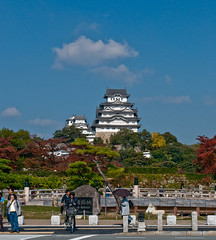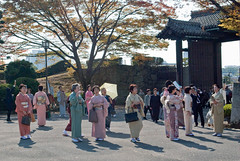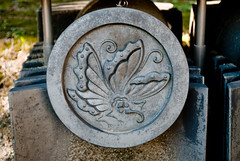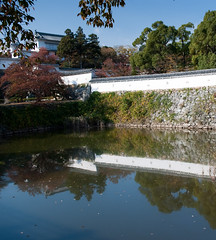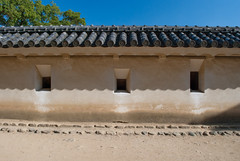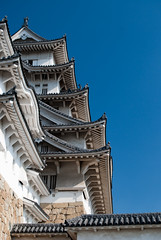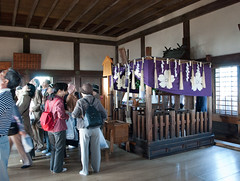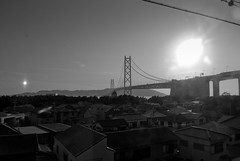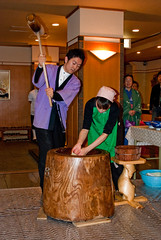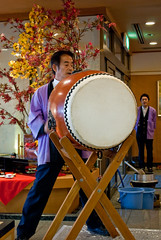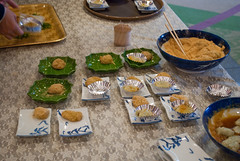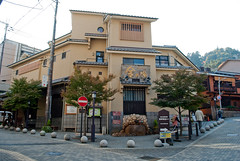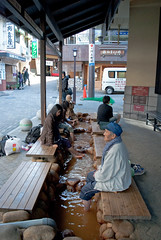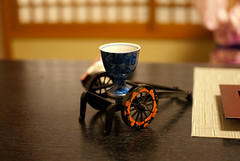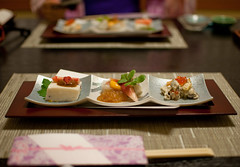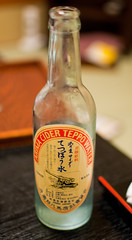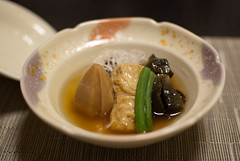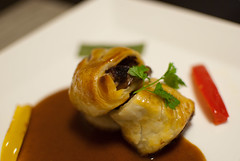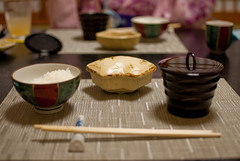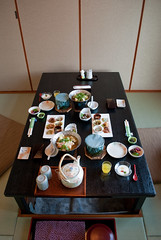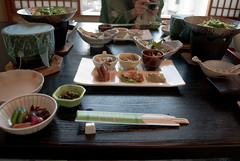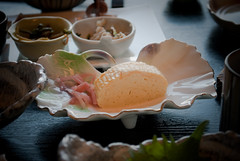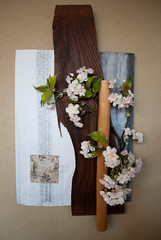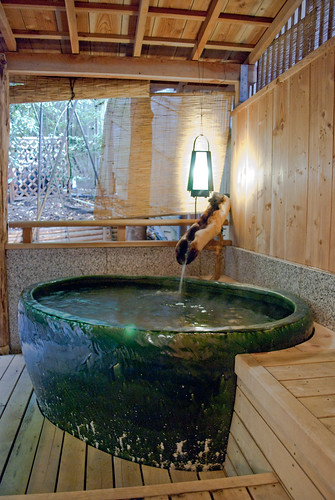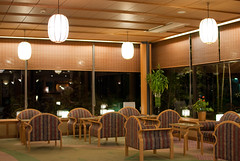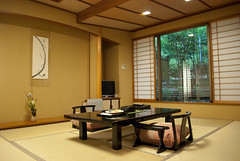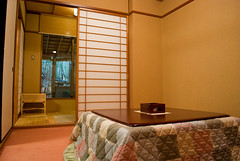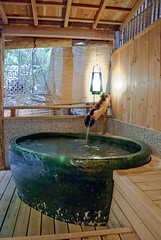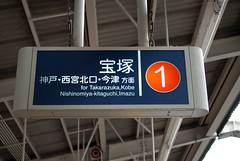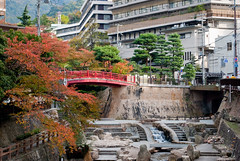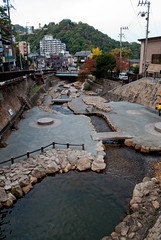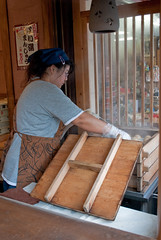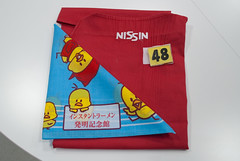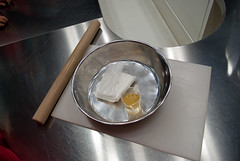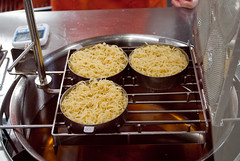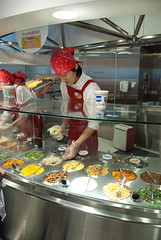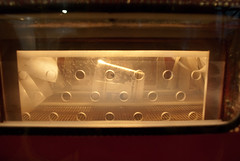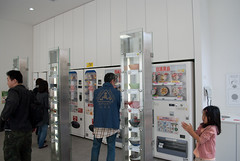Himeji Castle was the centre of activity and power in the area. Japanese castles are more famous for their defensive and architectural elements. From the many signs around the castle site, it explained how the castle would be last defense if the area were attacked. They could huddle all the soldiers into the castle and form an impressive defense against any attackers. The main tower itself was more of a storage and keep than a living quarter. So in this way, it's very different from a European castle which were often residences.
We walked up the main street from the train station to Himeji Castle. The giant white building can be easily seen from the end of the main road. It is an impressive structure as you get closer. There were also many other tourists in town - Japanese and non-Japanese. It was a beautiful and sunny fall day. We spent most of the time holding our jackets in our arms as we went around the castle grounds.
The castle grounds are made up of many buildings, but we were only really interested in the main tower. The very front of the castle grounds are free to the public. It's only when you approach closer to the main keep, that you must pay for admission. Once past the admission gate, we started a series of twists and turns that took us further up towards the main tower. It was like spiralling around the main tower to get up to the top. There are many beautiful examples of roof tiles at Himeji Castle. In fact, there is a whole collection of different roof tiles on the buildings.
We finally reached an expansive, flat, upper area where you could look out over the town around the castle. That's also where the main entry to the main tower was. We went in, but there were no lights anywhere in the castle. It looks like the Japanese were looking to preserve Himeji Castle in its original state as much as possible. The only sign of modernity in the castle was the emergency fire equipment that was placed all around the building.
Upon entry, we had to take our shoes off. The ladies at the door gave us all a plastic bag so we could carry our shoes with us as we trekked upwards through the tower. The main tower was six stories of steep stairs and large empty spaces. The empty spaces were meant to house food and weapons in case of an attack on the castle. Each floor was quite wide. Again, there were no artificial lights. So we were lucky that it was sunny outside; otherwise, we'd have a lot of trouble seeing inside the castle. Because of the lack of lights, it was also very hard to take pictures inside the castle. My best inside picture would be of a rack of rifles displayed on the weapons storage floor.
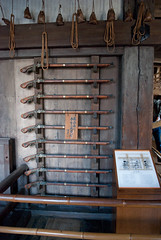
Also, there was a great view of the surrounding castle grounds. To the west, there was another building on the castle grounds known as the West Bailey. Then eastwards, on the way down, you could see the roofs of some of the adjacent castle buildings.
After a couple hours in the castle, we were really hungry. It was already 2pm, so we had missed most of the lunch rush outside the castle. There are a few restaurants directly across the road from the castle grounds. We grabbed a quick bite and drink for lunch. Then when we were on our way again back to Kobe.
